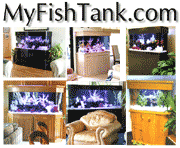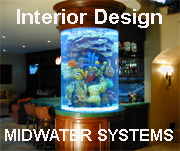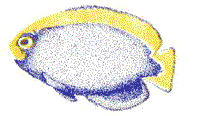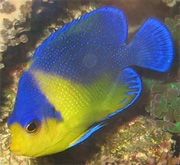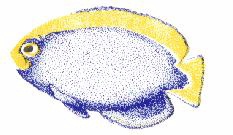|
Live Sand ?
What is Live Sand ?
Live sand is sand that is collected directly from the ocean and includes
all the living organisms that were in that sand at the time of collection.
The transportation of live sand is very similar to how fish and corals
are transported. The sand is not allowed to dry out, and it is placed in
a durable bag and shipped in a manner that it arrives at the wholesaler,
retailer, or your tank, still containing the life within the sand. The
sand is then introduced into the tank as the substrate that lays at the
bottom of the tank.
What is the benefit of Live Sand ?
Of the many approaches to setting up a reef tank, live sand bed tanks
are one of them. The basic idea is that the life ( ie: micro-scopic life forms,
or simply worms and bugs ) that live in the sand help breakdown the debris's
and organics within a tank.
Try to follow me here.... in a typical reef aquarium debri ( uneaten
fish food and fish waste ) is broken down by the filter system. That's is
to say, that the large particles are trapped out by the filter pads, organics
are removed by, either a protein skimmer or activated carbon, and the 'chemical
version' of animals waste is dealt with by the biological filter. Additionally
vacuuming of the bottom of the tank / gravel helps remove debris directly
from the tank, and the resulting water change dilutes the debris within
the water itself. Some would call this a sterile system and a relatively
inefficient one.
In a reef tank with a live sand bed ( set up properly ) the hobbyist
is creating an environment that is more 'ecologically complete' or dynamic,
certainly more like a true reef environment. As debris from the tank settle
at the bottom of the tank there are a number of animals that feed on that
debris, lets call them detrivores ( animals whose food source is the debris
of other animals ).These animals consist of crabs, shrimps, snails, starfish,
sea cucumbers, and bottom-dwelling fish.
Whether these animals actually consume or simply break up the
debris
into smaller particles they are making that debris easier for the next level
of organisms to break it down further, physically or chemically.
The worms, bugs, and micro-scopic forms of life help to break down the
debris even further, but their greatest benefit is keeping the sand loose,
or moving. If one were to place a non-living bed of sand in a tank eventually
it would become oxygen depleted. The results of this no-oxygen ( called
anoxic [ see Jaubert
System ] or anaerobic, meaning low or without oxygen ) environment would
be hydrogen sulfate ( that rotten egg smell ), and the bed would eventually
'clump' together and become solid. The worms, bugs, and micro-scopic life
within the sand keep it loosely suspended which allows oxygen down into
the sand thus assisting the aerobic ( meaning with oxygen ) bacteria in
being able to continue to chemically convert the debris, biologically speaking.
It is at this point that bacteria's are able to effectively convert
those 'manageable components' of debris into lesser toxic forms, such as nitrogen
gas. Nitrogen gas is essentially the last step in removing organic compounds
from an aquarium. As this gas floats up to the surface it is vented into
the atmosphere, and for all-intents-and-purposes the debris is finally removed
from the system.
How much sand do I need ?
There are a number of opinions about this. Some suggest one inch, others
say two to four inches, and still other promote six inches plus. There
is even a few who say twelve inches !!! I would suspect that two to four
is adequate. Now, besides the depth there is the issue of the individual
grain size of the sand, and the fact that it should be different grain
sizes placed in particular layers. The idea behind this is the ability
for oxygen to penetrate the depths of the sand bed, and for the debris
to work their way down into the sand bed.
In the Summer 2000 issue of Sea Scope ( Vol. 17 ), Ron Shimek suggests
"particle sizes with a ratio of 5:4:3. The first group is very fine particles
sized between 0.063 and 0.125 millimeters. The second group is between
0.125 and 0.25 millimeters, and the third 0.25 up to 2 millimeters."
( The only reference to which layer was the top
and which was the bottom was the following statement ), "Particles
larger than 2 millimeters should be avoided excepts as a thin surface layer,
no more than six millimeters thick, in areas of high current." ( To
me that suggested that the first layer one was at the bottom and all other
layers were on top of that, in their numerical order ).
Is a live sand bed for you ? Some swear by it,
some believe that aside from biological advantages there are also calcium
and alkalinity benefits, as well as potential food benefits for the fish
and coral inhabitants of the aquarium. Here are some links with
additional information if you wish to learn more about this type of reef
keeping.
Bob
Goemans Sand Beds articles, Parts 1 & 2
The
Why's and How's of Sand Beds
|
